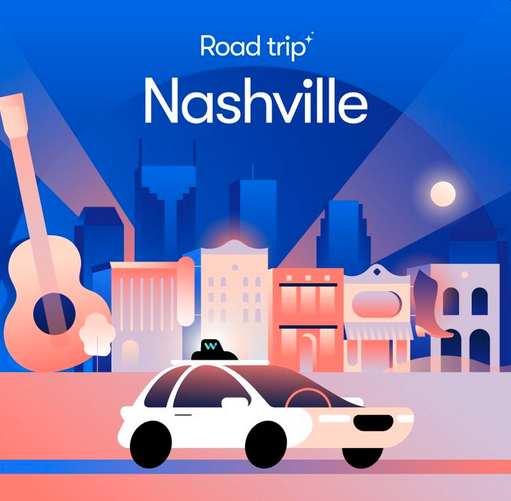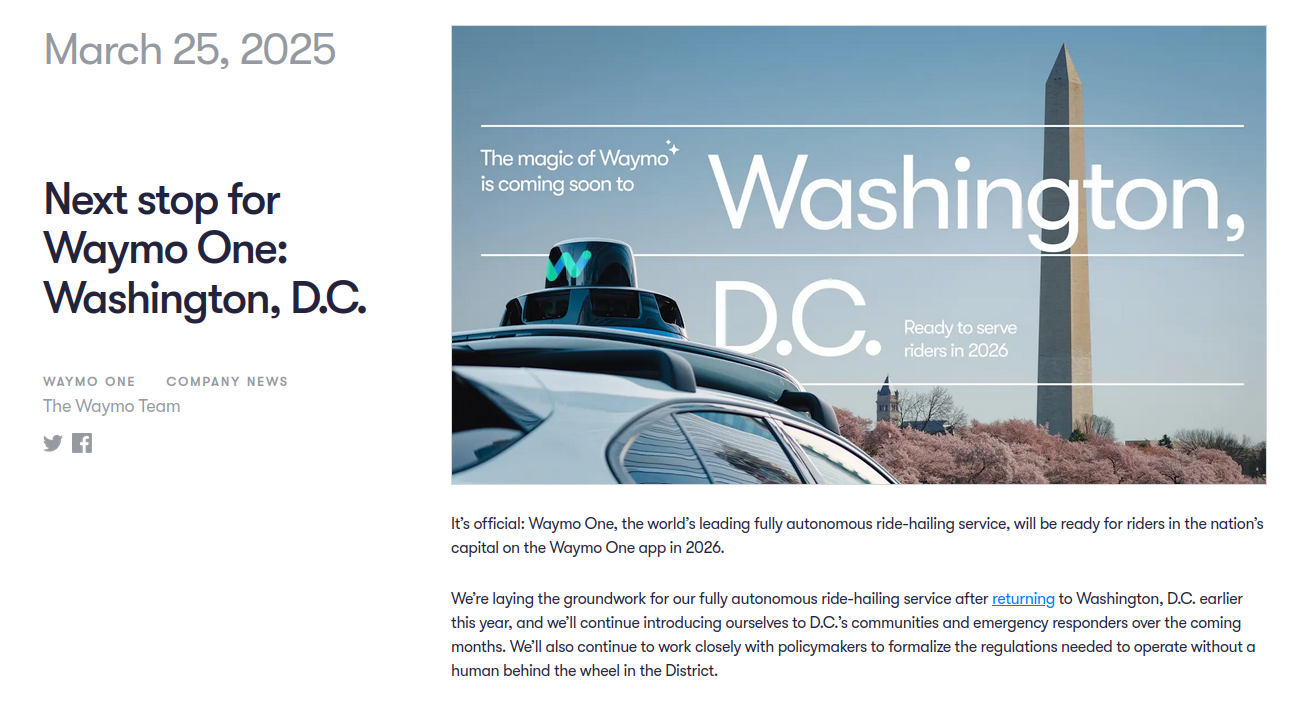Waymo in Nashville

Lately, I’ve been spotting Waymo vehicles cruising around the streets of Nashville. Each sleek Jaguar is outfitted with a futuristic lidar rig and piloted by a human driver - trained Waymo specialists. According to this article in The Tennessean, the team will be operating in Nashville through May 2025, gathering real-world driving data.

Sandy Karp, a spokesperson for Waymo, shared this in the article:
"While our goal is to bring our technology to more people in more places, we are not launching a rider program in Nashville at this time. We're focused on safely and responsibly advancing our autonomous technology through road trips like this in various cities around the U.S."
So it sounds like Waymo isn’t rolling out ride-hailing here anytime soon—bummer. Still, I’m curious about the kind of data these road trips generate. With lidar, radar, high-res cameras, and GPS sensors all running simultaneously, the amount of real-time data collected must be huge. I know from running a simulation for minutes there is potential to generate thousands of files extremely quickly.
To get an idea of how much data these cars are collecting—imagine every Waymo vehicle as a high-tech film crew riding around the city. It’s like having a dozen 4K cameras, a 3D scanner, and a radar gun all recording at once, every second, from every angle. In just a single day, one car can generate as much data as hundreds of hours of Netflix streaming—enough to fill up a modern laptop hard drive several times over.
How Does Waymo Handle and Utilize the Data Collected During Testing?
Waymo's autonomous vehicles are equipped with a sophisticated suite of sensors, including lidar, radar, and high-resolution cameras, all orchestrated by powerful onboard computers. This integrated system enables the Waymo Driver to perceive its environment in real-time, making informed decisions on the road.
Data Collection and Storage
Waymo has developed advanced data compression techniques, such as the Range Image Deep Delta Encoding (RIDDLE) algorithm. RIDDLE efficiently compresses lidar data by predicting and encoding the differences between successive scans, significantly reducing storage requirements without compromising data quality.
Data Transmission and Cloud Integration
After data is collected and compressed, it is transmitted to Waymo's cloud infrastructure for further processing. This centralized system allows for scalable storage and provides the computational resources necessary for training and refining the Waymo Driver's machine learning models.
Simulation and Scenario Testing
Waymo leverages simulation tools like Waymax to create realistic driving scenarios based on real-world data. These simulations enable the testing and evaluation of the Waymo Driver's performance in a controlled environment, allowing for the assessment of behavior in complex and rare situations without the risks associated with real-world testing. This sounds similar to the functionality of Carla I discussed in previous articles. Waymax may be worth investigating further at a later date.
Contribution to the Research Community
To support and accelerate advancements in autonomous driving, Waymo has released the Waymo Open Dataset. This dataset includes high-resolution sensor data and annotations, providing researchers with resources for developing and testing their models. The dataset encompasses various driving conditions and environments, facilitating a wide range of research applications.
Right now, Waymo is running the 2025 Waymo Open Dataset Challenges, which invite researchers around the world to solve real-world self-driving problems using actual Waymo data. This year’s competition includes challenges like vision-based end-to-end driving, where participants have to predict the best driving actions using just camera footage. To support this, Waymo added 5,000 new clips featuring tricky scenarios—things like construction zones during marathons or random obstacles popping up on the freeway. There’s prize money on the table, but more importantly, it’s a reminder of how much of this cutting-edge tech still depends on thoughtful collaboration, good data, and tough real-world edge cases—like the ones being recorded right here on the streets of Nashville.
Where is Waymo Going Next?
Washington DC will be the next city to get Waymo taxis in 2026.

Resources:
https://waymo.com/waymo-driver
https://waymo.com/blog/2025/03/2025-waymo-open-dataset-challenges
https://waymo.com/blog/2025/03/waymos-impact-on-the-tourism-economy
https://waymo.com/blog/2025/03/next-stop-for-waymo-one-washingtondc
https://waymo.com/research/waymax
https://waymo.com/research/riddle-lidar-data-compression-with-range-image-deep-delta-encoding